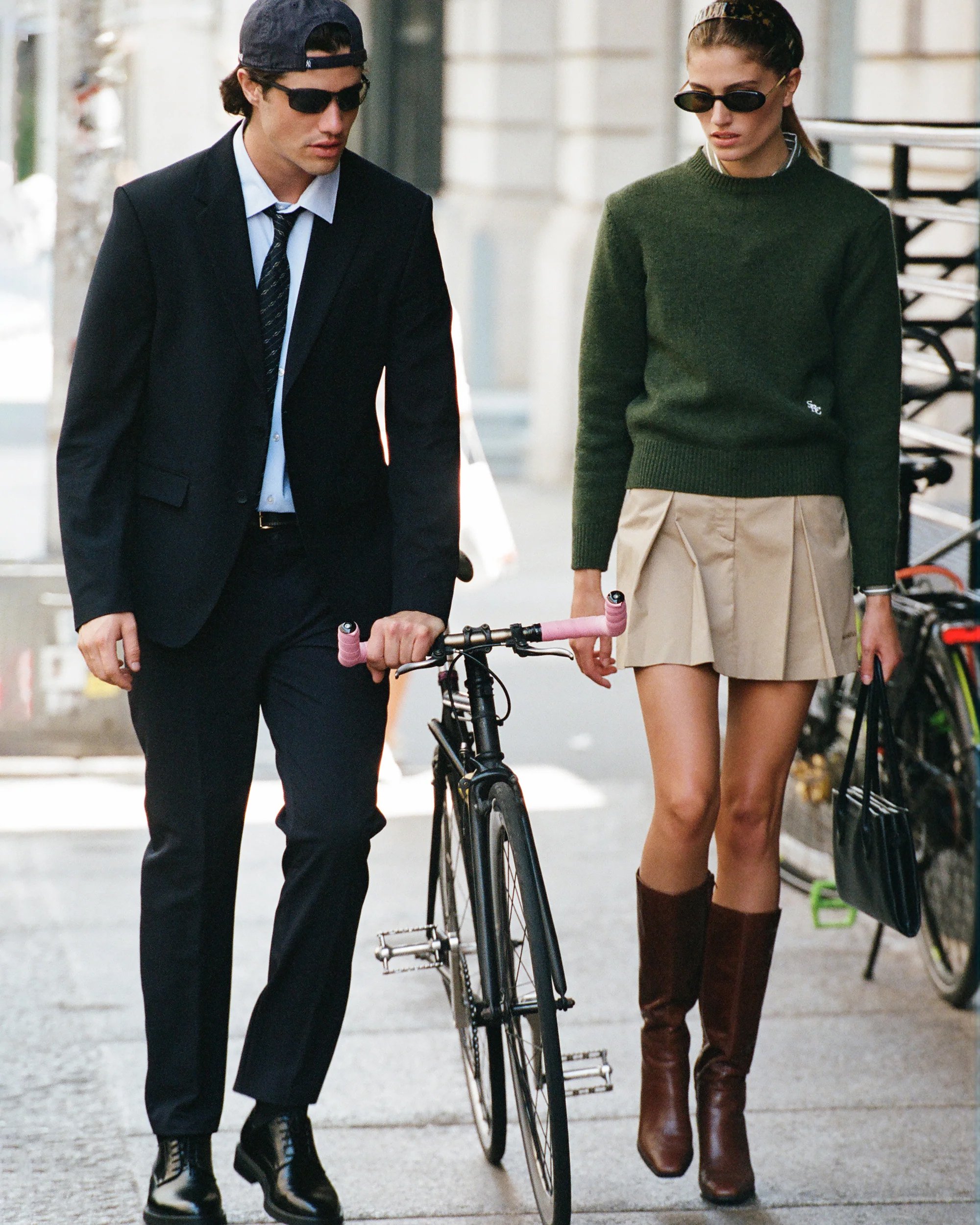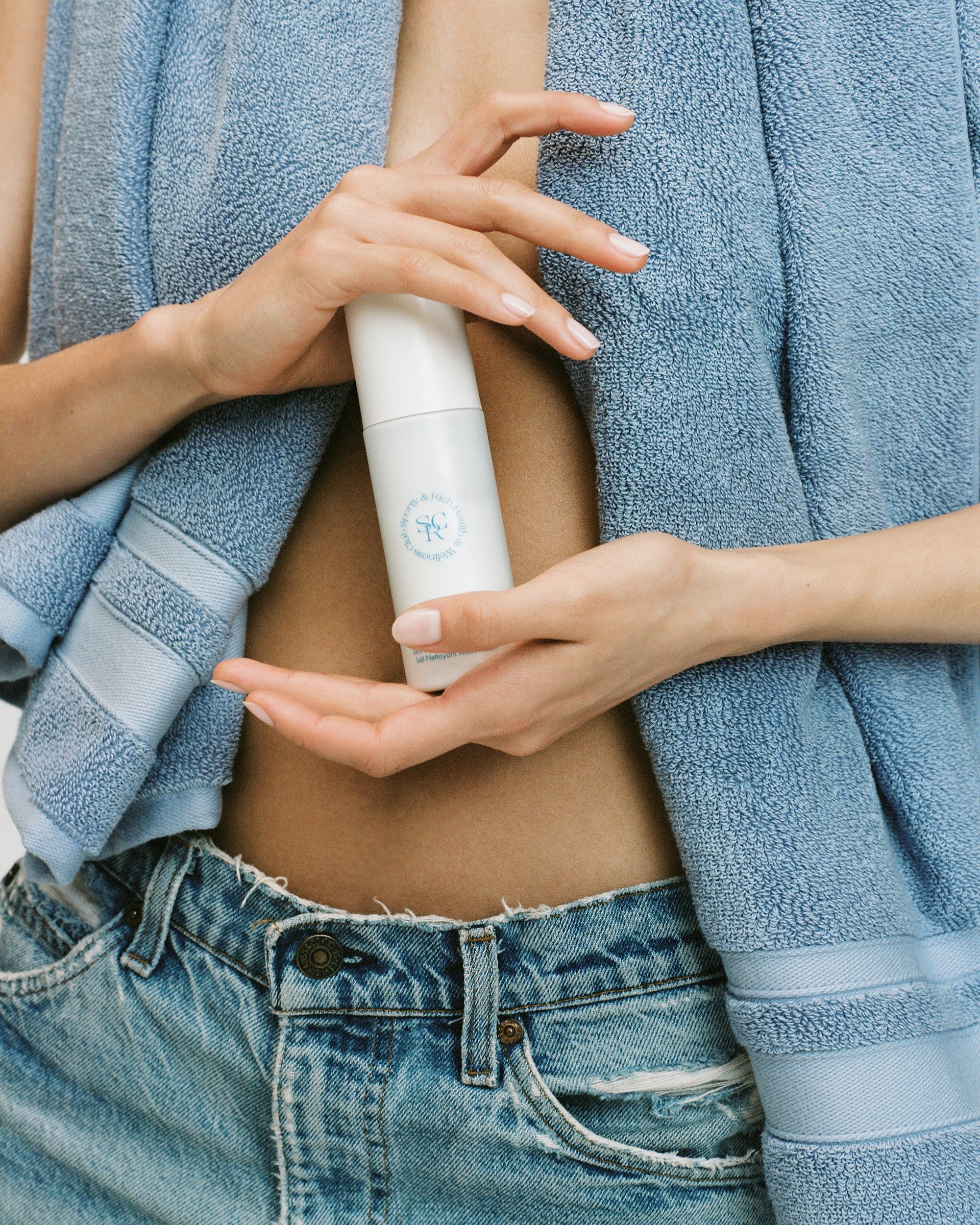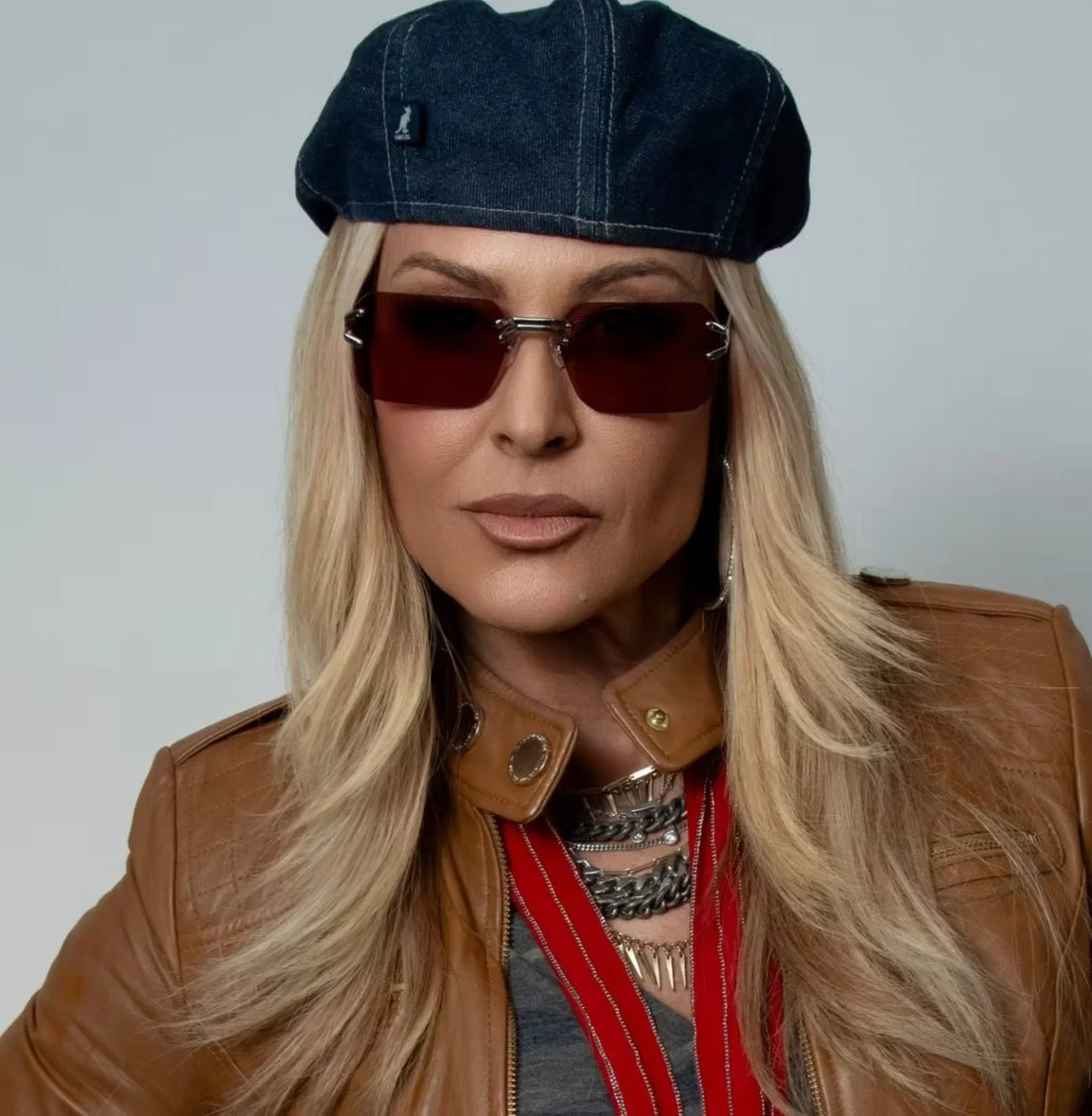An Unfiltered Email Exchange with Emily Oberg
Courtesy of Sporty & Rich
Emily Oberg
An Unfiltered Email Exchange with the founder behind Sporty & Rich
By Bonnie Langedijk
Emily Oberg unintentionally created one of the most defining brands of our time. Sporty & Rich products are commercial and wearable, but it’s not really the sweatshirts with “Health is Wealth” slogans that made a whole consumer group tap into the brand. It’s about buying into something bigger. Where luxury brands have been using this value system for years (think the “if you know, you know” approach The Row, Maison Margiela and Cartier apply), there hasn't been a womenswear brand for a new generation that aspires to wearing aforementioned brands, but for now wants to be a part of something too.
Starting out as an Instagram mood board in 2015 – and later a print publication – Sporty & Rich was a lifestyle before it was a brand. As Oberg started sharing images of the things she liked, she tapped into an aesthetic that felt both nostalgic yet luxurious – an amalgamation of old world meets new world – which many identified with and aspired to. Think images of vintage Hermes bags and Range Rovers, classic interiors, 90s Michael Jordan and Carolyn Bessette-Kennedy looks. With it, she built a loyal fanbase who connected with the world she curated, creating a community of like-minded people who value health and wellbeing as well as style. The brand launched its first line of apparel in 2019. “We did a small run of maybe 10-15 items on pre-order and the sales were higher than I expected, and I thought, maybe people like the brand and want more from us,” Oberg told HURS. And they did.
Since then Sporty & Rich has grown into an approximately $30 million business. The 29-year-old has collaborated with luxury hotel Hotel du Cap-Eden-Roc and Adidas, opened a 3,600-square-foot flagship store in New York and will soon launch a beauty collection. Oberg is building a business for longevity, with no interest in looking for approval from the luxury fashion ecosystem or building a brand based on exclusivity. Instead she’s creating a universe of her own led by her taste and with it, her community’s. But we’ll let Emily tell you all about it.
Sporty & Rich’s Essentials Drop, inspired by 90s paparazzi imagery of Carolyn Bessette-Kennedy. Courtesy of Sporty & Rich.
Sporty & Rich’s Essentials Drop, inspired by 90s paparazzi imagery of Carolyn Bessette-Kennedy. Courtesy of Sporty & Rich.
Bonnie: Most people know Sporty & Rich started out as a mood board and publication. Since then it’s become a brand but you’ve continued to build the universe around it, rather than solely focusing on products. What was your strategy behind building the brand?
Emily: There was no strategy because I never had the intention of Sporty & Rich becoming a brand. It all happened organically and naturally, which is why I think it worked so well. There was no “trying” to do anything. I just did what I loved and the success followed. I don’t think things always need to be intentional and calculated. My only goal when I started and now still, was to do something I loved, and that made me happy and fulfilled. I wanted to create a community first, and anything that happened after was by chance.
“There was no STRATEGY because I never had the intention of Sporty & Rich becoming a brand.”
Community is an interesting one. I would say Sporty & Rich is an anomaly when it comes to the womenswear market. I often find that menswear brands are better at creating brands that live in culture, and to build community around their brands compared to womenswear brands.
Emily: I think this is true for men’s streetwear brands, because there are so many subcultures within streetwear and there are many different ways to tell those stories. I think women’s brands tend to focus more on the clothing itself rather than the lifestyle or image around the brand and product. There doesn’t seem to be as much community involvement when it comes to women’s brands.
I agree. Maybe it’s because the brand lives somewhere between the fashion and streetwear ecosystem. You’ve been able to leave your mark on the fashion industry without having to adhere to their scheduling and rules.
Emily: I would consider us a lifestyle brand. Fashion and luxury are limited. I think we’re so much more. We offer a lifestyle and way of life.
Do you think there’s been a shift in what consumers want from brands in general?
Emily: Consumers want a brand with life to it. Not just a brand that has no identity or just one person dictating what the vision and identity of the brand is. People in general, have an inherent need to feel that they’re a part of something. This is what strong brands do. They create an identity, then a community, then a product, and then a world in which that product lives and is part of. Consumers resonate with brands whose world they want to be part of and that they can see themselves living within. It’s not enough to simply make a good product these days, you have to offer so much more. And all of these things come from good intuition, sensibilities and an understanding of how people think and operate. Why they make the choices they do, what drives them, what moves them and what inspires them.
Tennis Drop 2. Courtesy of Sporty & Rich.
Hotel du Cap-Eden-Roc x Sporty & Rich. Courtesy of Sporty & Rich.
There definitely needs to be value beyond simply buying a new product. What brands do you think do that well?
Emily: Ralph Lauren is at the top for sure, they hands down have the strongest identity and image and always have. It’s the first brand that made me feel something when I saw their images. They’ve built a world that you want to be part of and that’s so detailed, full of family and love. I love old Calvin Klein, Loro Piana, Gap, Chanel, Hermès. I like brands who have a strong history and legacy, and who are easily identifiable. They aren’t ostentatious or loud, but they all possess a uniqueness and subtle details that are instantly recognizable.
What do you think has been that secret sauce that has led to the success of Sporty & Rich?
Emily: My own identity. The brand is me, it’s who I am. I live and breathe it and vice versa. The brand is based on what I like and my taste. We only make things that are true to what I would actually use and wear. I think most brands chase trends, but we create them. To us, when we make a tennis collection, we don’t make it because it’s trendy, we make it because I’m an avid tennis player.
What about collaborations? Do you apply that same philosophy or are there specific characteristics you look for in the brands you work with?
Emily: The key for us with any collaboration is it has to make sense to our audience. It can’t come out of nowhere and be a random nonsensical thing. I think people can always see right through it when something is done purely for monetary purposes. I want to make products that I love with brands that I love and respect. We love heritage brands. Brands who’ve been doing this far longer than we have, who we can learn from and whose audience we think would also like to get to know us.
The brand has grown quickly since launch. Were you ever worried about overexposure or things moving too quickly?
Emily: No, because I’m not set on keeping the brand “exclusive” or excluding people in general. We’re a brand for everyone and our demographic speaks to that. We have one of the widest demographics I’ve ever seen. We aren’t limited to speaking to a specific audience, and we resonate with all different types of people. I don’t think a brand like Ralph Lauren ever thought of being overexposed. At the end of the day, we want to be a global brand. I don’t want to limit ourselves or our success. We aren’t playing small, we want to be mass in a positive way.
The Sporty & Rich flagship in New York. Courtesy of Sporty & Rich.
Sporty & Rich beauty
In a world where exclusivity is still something most brands aspire to, it’s a refreshing point of view. As a founder people always have their opinions. What do you think is the biggest misconception people have about you and what it takes to build a brand?
Emily: Probably that the brand isn’t self funded and that I’m some rich trust-fund kid who didn’t work hard for everything that I have. I think it’s super rare to see brands at our level that have no funding and no financial assistance whatsoever. There aren’t many stories like ours. There's usually some rich finance guy in the background helping out. People think it’s easy to start a brand and make a product. I will admit, making a simple product is pretty easy these days. There are so many factories that are accessible, that’s the easy part. What’s hard and what most brand’s don’t and cannot do, is create a lasting legacy. To build a world and lifestyle around their brand, and create a visual identity that resonates with people. That’s the hard part, the secret sauce that very few are capable of building.
Creating something that lasts. What’s been your biggest challenge while building Sporty & Rich?
Emily: It’s a bit lonely at times because when things are good, you don’t really have anyone who tells you that you did a good job or saying they’re proud of you or that you did well. And when things aren’t going well, you don’t have anyone reassuring you or comforting you. You have to do all of those things for yourself. If you don’t have a strong mindset, it can be really challenging.
You have to be your own cheerleader – during the highs and the lows. What’s the most important lesson you’ve learned over the last few years?
Emily: You have to be good at making decisions, quickly and easily. I find that I’m efficient because I don’t spend a lot of time deliberating and being indecisive about choices— big or small. You have to constantly be moving forward and not get stuck in the details of things that won’t matter a year from now. It’s important to know yourself, to know what you want, and to have a good instinct. This will help you make decisions more easily. What I’m best at when it comes to business is knowing what the right thing to do is.
When you have a clear vision of your business, it’s also easier to be decisive. Especially when that business is built around your own aesthetic and taste. What are you working towards? As in, what does the future version of Sporty & Rich look like?
Emily: Since we became a real brand my vision has always remained the same. A luxury country club for young people. With all of the amenities that I wish would exist under the same roof, but don’t. I know exactly what services and treatments people would want. Since health is my number one passion, it would be a natural next step for us. Having a brand is cool, but building a global wellness empire where people can improve their health and quality of life? I think that trumps everything.
This interview has been edited and condensed for clarity.










